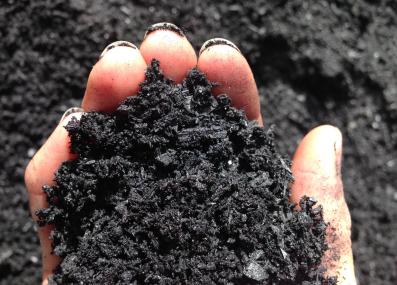Have a question?
Does harvesting wood contribute to climate change even if the wood is used for permanent structures like houses?
Yes: the tree waste left behind, and the process of removing, processing and shipping the wood, all produce climate-warming emissions.
May 14, 2024
Harvesting wood is a major contributor to climate change. That’s because both soils and trees contain carbon. Disturbing soils and cutting down trees releases some of that carbon, creating carbon dioxide, the most important climate-warming greenhouse gas.
That’s especially clear for the majority of wood harvests that are used for fuel or industrial applications, like making paper and wood chips. These products generally have short lifetimes before they’re burned or left to decompose, releasing their carbon to the atmosphere. But what about the 20 percent of harvested wood that goes to long-term uses, like building homes and furniture?1 Using wood for construction does lock up some of its carbon for decades or more, but it still has more climate impact than leaving the trees untouched.
First, the act of harvesting wood produces its own climate-warming emissions. When wood is pulled from a forest, for instance, timber companies need to build roads to access it, says Trevor Cambron, an MIT PhD student who studies human impacts on land-based ecosystems. Logging vehicles create emissions, and plants cleared to build the road will release carbon, too. After trees are cut, vehicles burning gasoline or diesel will transport them for processing. The equipment that turns the wood into usable products usually runs on fossil fuels as well.
The manufacture of any wood product also produces waste. The branches and leaves that can’t be used will generally be burned, releasing their carbon. Stumps and roots left behind, which can make up nearly one-third of a tree’s mass,2 will decompose over time, releasing even more carbon.
If wood harvesting clear-cuts an entire forest, the climate impact is especially large. But even in a “managed” forest, where only a fraction of trees are cut down at any one time, some carbon is always released, and the forest will take years to regrow and soak up the same amount of carbon.
“It's going to take decades for the carbon that was lost to be reabsorbed by the growing forest, if it can be fully made up,” says Cambron. “For a few decades at least, wood harvest will be expected to increase the amount of carbon in the atmosphere.”
Researchers are still grappling with how to calculate the climate impact of these steady, and fluctuating, carbon emissions. According to one study, global wood harvests could add between 3.5 to 4.2 billion tons of carbon dioxide to the atmosphere per year in the first half of this century.3 That would be around a tenth of all human emissions.4
Scientists also disagree about the best way to account for the carbon that remains in furniture or houses after they’re constructed. In the most optimistic case, you could imagine that the carbon is permanently locked up, while the harvested trees regrow, drawing more carbon out of the atmosphere. In the worst case, some carbon from the harvest may be permanently lost, while the carbon in the building, too, must eventually be released when the structure reaches the end of its life. These factors lead to very different estimates of emissions from building with wood.5
The loss of forests—whether for timber or, as is more common, to make space for agriculture—also has consequences beyond those for climate. “It's important also to think of forests as more than just a carbon pool,” says Cambron. “The forests really are these massive stores of biodiversity. And they provide a lot of ecosystem services to humanity, beyond just their ability to sequester carbon.”
“So when we think about different ways to achieve climate goals and to allocate our investments, then we need to consider those non-carbon services that forests provide also.”
Thank you to Daniel Whitney of Redmond, Washington, for the question.
Submit your own question to Ask MIT Climate
Get the latest from Ask MIT Climate monthly in your inbox
1 World Resources Institute: "The Global Land Squeeze: Managing the Growing Competition for Land." Timothy Searchinger, Liqing Peng, Jessica Zionts, and Richard Waite. July 20, 2023, doi:10.46830/wrirpt.20.00042.
2 Mokany, Karel, R. John Raison, and Anatoly Prokushkin, "Critical analysis of root:shoot ratios in terrestrial biomes." Global Change Biology, Volume 12, Issue 1, January 2006, doi:10.1111/j.1365-2486.2005.001043.x.
3 Liqing Peng, Timothy Searchinger, Jessica Zionts, and Richard Waite, "The carbon costs of global wood harvests." Nature, Volume 620, July 2023, doi:10.1038/s41586-023-06187-1.
4 Friedlingstein, Pierre, et al., "Global Carbon Budget 2023." Earth System Science Data, Volume 15, Issue 12, 2023, doi:10.5194/essd-15-5301-2023.
5 See for instance, Kwok, Alison, et al., "Seeing the Forest and the Trees: Environmental Impacts of Cross-Laminated Timber." Technology|Architecture + Design, Volume 4, Issue 2, 2020, doi:10.1080/24751448.2020.1804754; Younis, Adel and Ambrose Dodoo, "Cross-laminated timber for building construction: A life-cycle-assessment overview." Journal of Building Engineering, Volume 52, July 2022, doi:10.1016/j.jobe.2022.104482.








